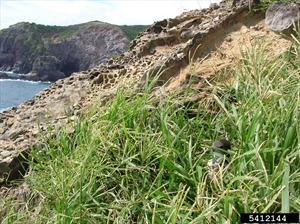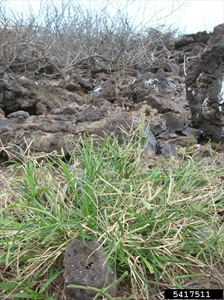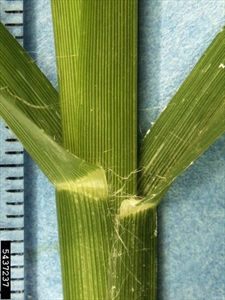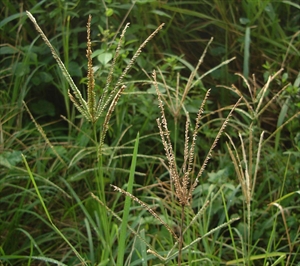- Widespread. Asia, Africa, North, South and Central America, Caribbean, Europe, Oceania. In many Pacific islands.
- Grows vigorously and produces many seeds. Invasive in cultivated (cotton, maize, upland rice, sweet potato and sugarcane) and other disturbed locations and natural areas, such as the margins of natural forests and grasslands, marshes, streams, coastal areas, and roadsides.
- Grows relatively flat, reaching to 40 cm high. Stems and leaf sheaths flattened. Leaves, bright green, up to 15 cm long, flat to V-shaped. Ligule short (at meeting of sheath and blade). Flowers, in spikelets along 3-8 central stems, one usually attached 1 cm below others. Seeds, reddish brown to black. Well-developed root system.
- Spread: seeds; wind; water, contamination of crop seed; on fur of animals, machinery and vehicles.
- Biosecurity: moderately high risk of introduction; seed contaminant.
- Biocontrol: No successes reported.
- Cultural control: hand weed or hoe; vehicle hygiene.
- Chemical control: in Australia: quizalofop-p-ethyl (and Fiji); MCPA (and Fiji); trifluralin; fluazifop; pendimethalin; isoxaflutole; metribuzin; diuron; clethodim; oxyfluorfen; glyphosate. Seek advice on resistance management.








